De’Longhi La Specialista Opera review: is this the best domestic espresso machine ever?
Brilliantly easy espresso and cold brew maker for discerning coffee connoisseurs

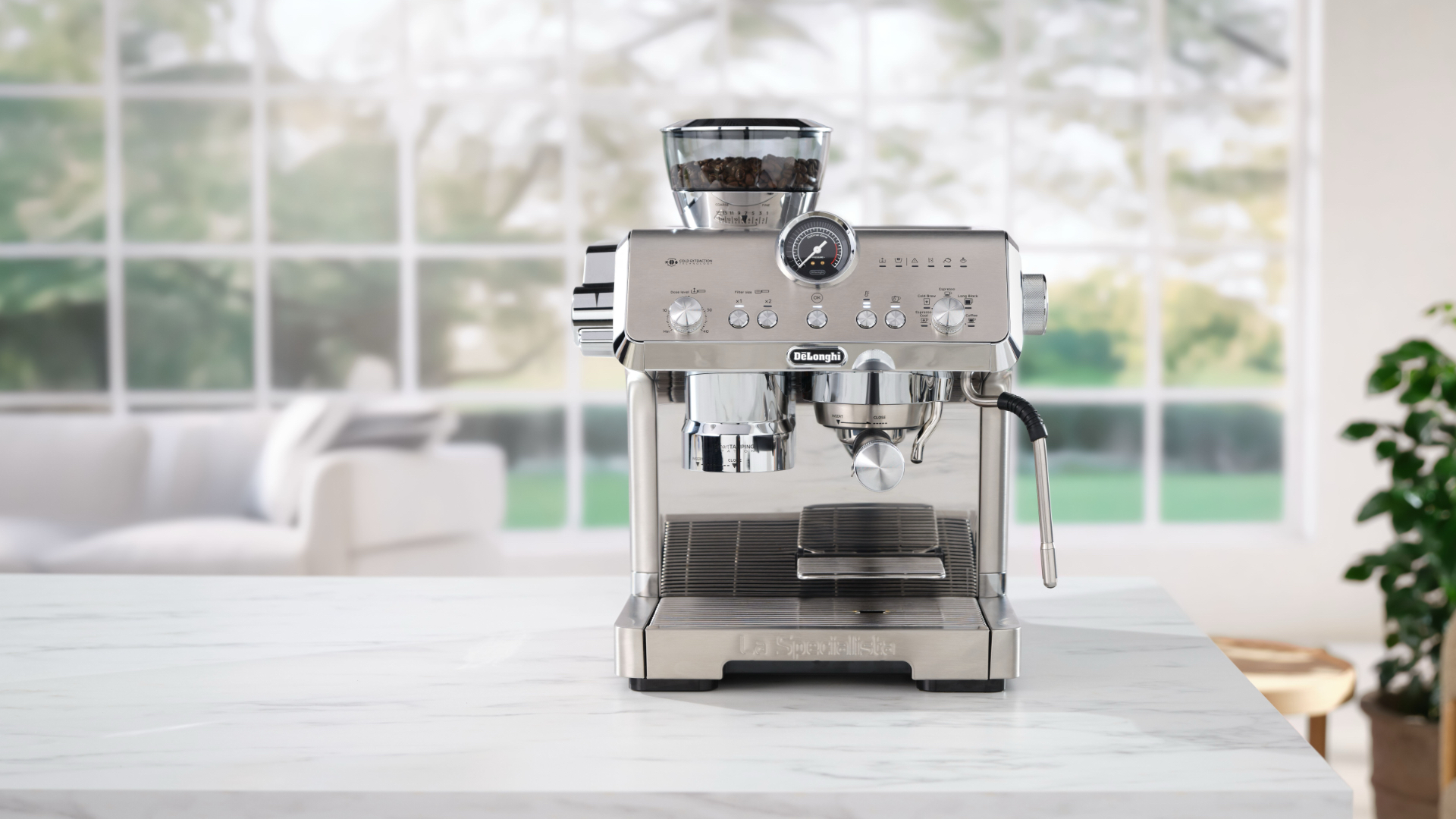
Looking for the ultimate domestic espresso machine that doesn’t require a degree in barista physics to operate? You need the De’Longhi La Specialista Opera. Whether it’s producing one of the best espressos you’ve ever tasted, a lush cappuccino or even a cold brew over ice, this machine does it all, and with the utmost of ease. Warmly recommended.
-
+
It makes stunning espressos, cappuccinos, cold brews and even tea
-
+
So easy to use
-
+
Excellent build quality
-
-
You can’t remove the coffee hopper
-
-
Could be considered pricey
Why you can trust T3

Welcome to T3's review of the De’Longhi La Specialista Opera, a fully-featured semi automatic espresso maker with the ability to produce cappuccinos, cold brews and even tea.
By their very nature, manual espresso machines are notoriously difficult to use, mostly because there are so many variables involved in producing the perfect extraction. Well De’Longhi has absolutely nailed it with this pro-style beast and produced a machine that is not only really easy to use but one that produces barista-style coffee perfection time after time.
In fact, this commendable machine could quite easily occupy a top spot in our main coffee guide to best bean to cup coffee machine. It’s that good, and here’s why.
De’Longhi La Specialista Opera review: Price and availability
In the UK, the De’Longhi La Specialista Opera retails at £799 and is available from De’Longhi direct, John Lewis & Partners, Currys and Lakeland. If you live in the USA, try De’Longhi direct and Amazon, where it’s selling for $699.95.
De’Longhi La Specialista Opera review: Unboxing
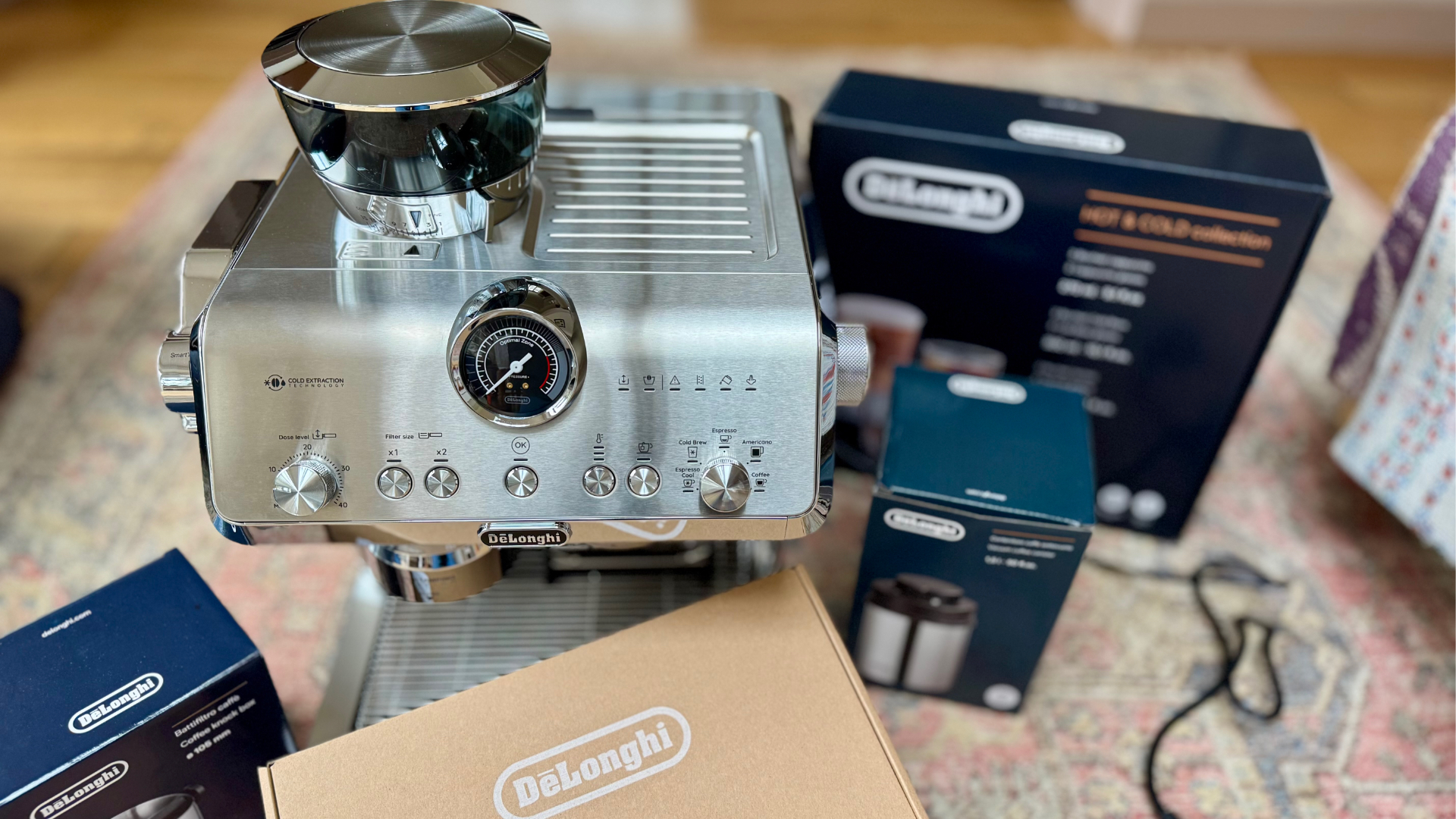
To my knowledge the La Specialista Opera is only available as a combo pack though you can be sure De’Longhi will eventually offer the machine as a solo unit. Nevertheless, you do get a plethora of very useful accessories which you would likely purchase down the line anyway. These include a sturdy stainless steel knock box for disposing spent coffee grounds, a sealed stainless steel coffee canister that you pump to create a vacuum, the obligatory stainless steel carafe for milk frothing and a set of six stylish double-walled glass coffee cups but strangely no small espresso-sized ones. You also get two brewing baskets – single and double – a water hardness kit, cleaning tablet and cleaning brush.
De’Longhi La Specialista Opera review: design and features
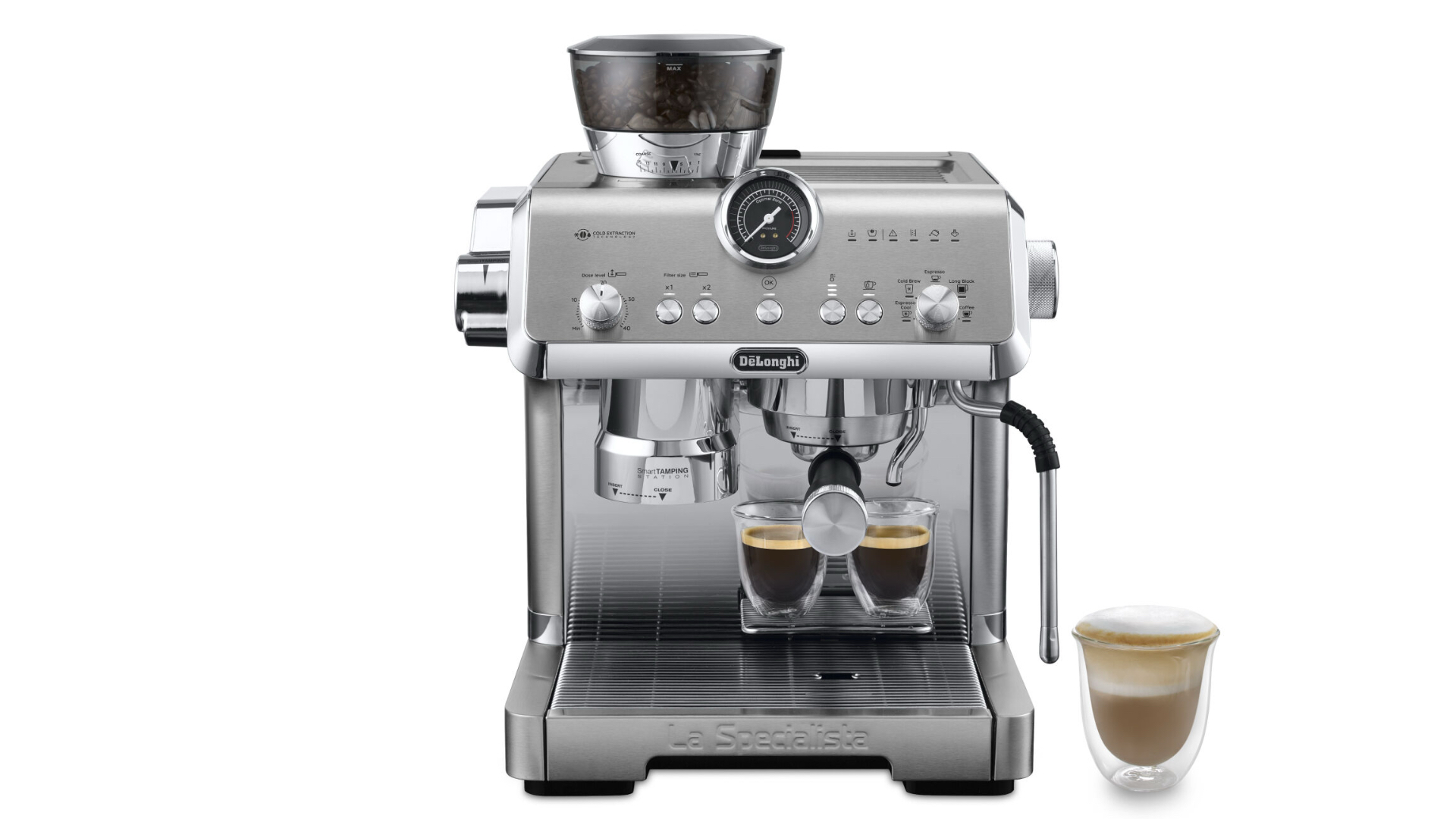
I think I must have reviewed every type of coffee machine going, from filter and cold brew to espresso and bean-to-cup. But, for me, nothing beats a full bodied espresso with obligatory lip-smacking crema. Some manual machines produce exquisite espresso coffee but they have such steep learning curves that reaching coffee perfection is a lottery involving the usual parameters required for successful espresso making. Hence, normally when you get a new espresso machine it takes five to ten cups to reach a happy medium and even then you’re left wondering if the machine could do better.
Sage has pushed the envelope in regards to user friendliness but even their machines can sometimes be confusing to get a handle on, mostly because there are often too many buttons and options available. Well I’m happy to report that, after more than a decade of espresso machine reviewing, I think I’ve found what I consider the Holy Grail of domestic espresso machines. Ladies and Gentlemen, I give you the De’Longhi La Specialista Opera, the easiest and most consistently accurate espresso machine I have ever had the pleasure of using and, in my opinion, one of the very best, too.
Let’s start with aesthetics since no one wants an ugly looking appliance on their countertop. Well I’m pleased to report that the convolutedly-named La Specialista Opera is a handsome beast that looks as rugged and serious as a pro-spec café machine, only on a smaller scale. Despite some inevitable plastic in the build, there’s still enough steel on board to give this machine a professional look that you will never shy away from wanting to use. Granted, it does have a large footprint – 380mm in width, 370mm in depth and a substantial 445mm in height – which could be an issue in a small kitchen. Also, the height of the grinder’s hopper could be a deciding factor when it comes to placement under top mounted cupboards since, in my case, the lid of the hopper is about 1mm taller than the bottom of my cupboard which means having the machine positioned right at the front of the worktop. Nevertheless, I don’t see this as a reason to avoid it.
The La Specialista Opera is one of those machines that straddles the space between a manual espresso maker and a bean-to-cup. Hence, like the semi-auto Dualit Espressivo Pro I recently reviewed, it comes with a manual grinding section on the left instead of the bean grinding being fully automated in the background like the KitchenAid KF8 bean-to-cup espresso maker I also recently reviewed. With this machine you grind the beans first on the left – straight into the heavyweight 58mm twin-spout portafilter – then remove the portafilter and insert it into the group head on the right.
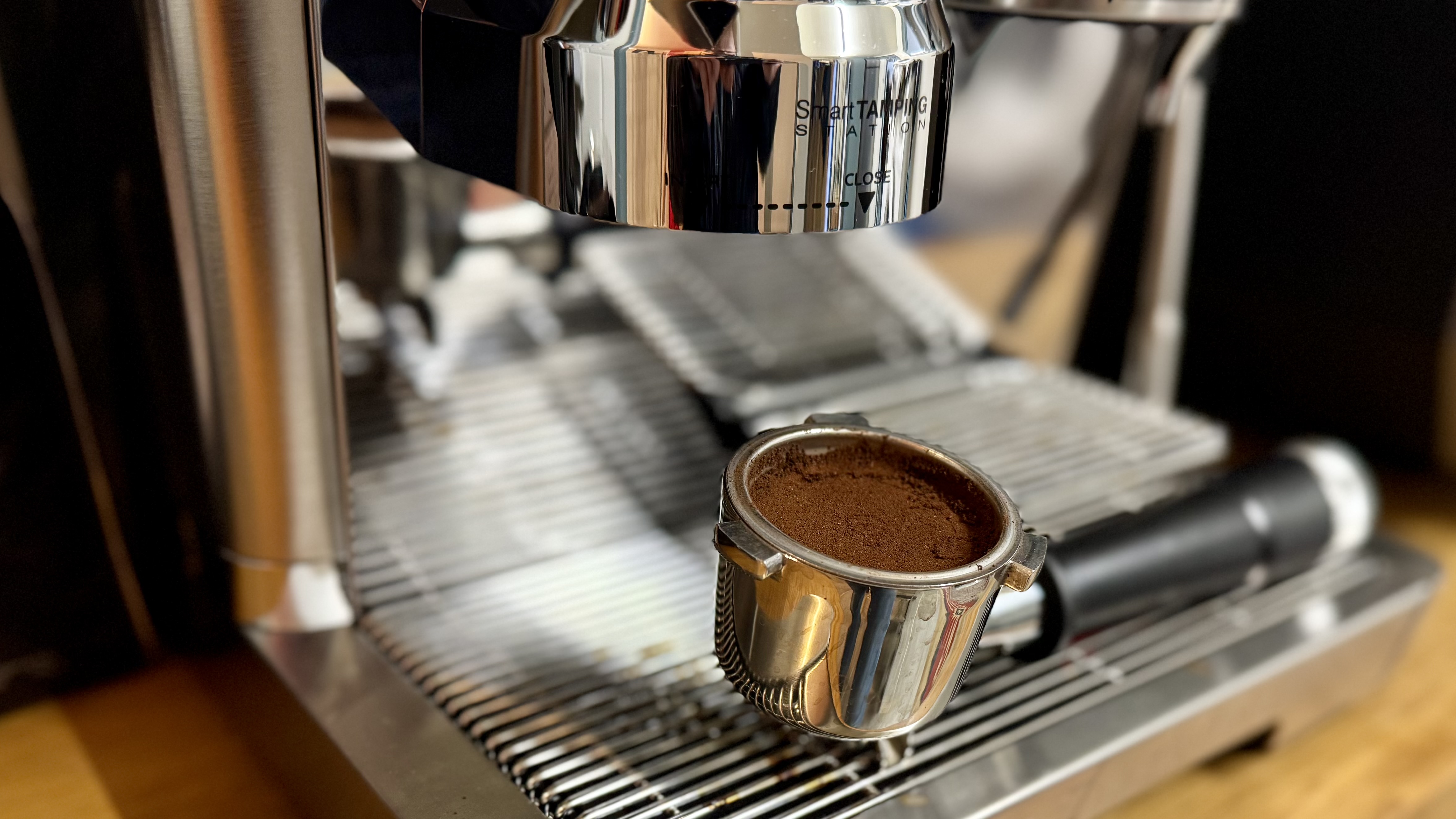
However, where a unit like the Dualit requires manual tamping, this model has a tactile tamping lever that applies precise spring pressure to the grounds every single time. I can’t tell you how vital this component is when it comes to successful espresso making because with most domestic machines tamping is arguably the only process that is performed manually and I can guarantee that no two hand-tamped baskets will ever be the same, unless you’re an experienced barista who always tamps evenly and with the same pressure. It’s quite literally the difference between having a gush of coffee coming out of the spout with evidence of channeling or a trickle, when what you actually want is a thin two millimetre wide stream. With this amazing tamping system I’ve had perfect espressos every time.
Which leads to why this machine is so easy to use. Aside from tamping pressure, the other main parameters involved in successful espresso ventures are bean choice, fineness of grind, volume of ground coffee, water temperature, pre-infusion period and extraction time. With this machine all you need to worry about is two things – the fineness of the grind and water temperature during the pre-infusion stage. Since the De’Longhi comes with two non-pressurised baskets, I’ve been using the single shot basket which is large enough to easily fill an average size espresso cup.
The first thing I did was set the grind selector to around setting number 3 – there are 15 – thinking that I wanted a really fine espresso grind. But this proved too fine and the coffee refused to leave the spout. Also, the all-important pressure gauge went off the scale when the needle should have been as near to centre as possible. So I backed off the grind level to number 5 and it’s proved to be the perfect setting for every cup I’ve made since. Incidentally, I also had to fiddle with the length of the grind using the thumbwheel dial on the top left. For me, anything below the 20 mark doesn’t grind enough coffee to fill the single portafilter’s basket and I should add that the figures on the dial don’t relate to a genuine time scale because it takes just 8 seconds each time.
The final parameter with this machine is the pre-infusion temperature and this relates to the variety and roasting degree of the beans you’re using. According to the manual, ‘Robusta beans and dark roast usually require lower temperatures while Arabica beans and lighter roast usually require higher brewing temperatures’. To change the infusion temperature – which is the temperature of the water in the thermoblock and not the temperature of the drink in the cup – simply tap the corresponding button to your choice of three different temperature levels. As soon as you tap the centre brew button you can hear about 18 pulses of hot water during the pre-infusion period before the coffee comes streaming it out.
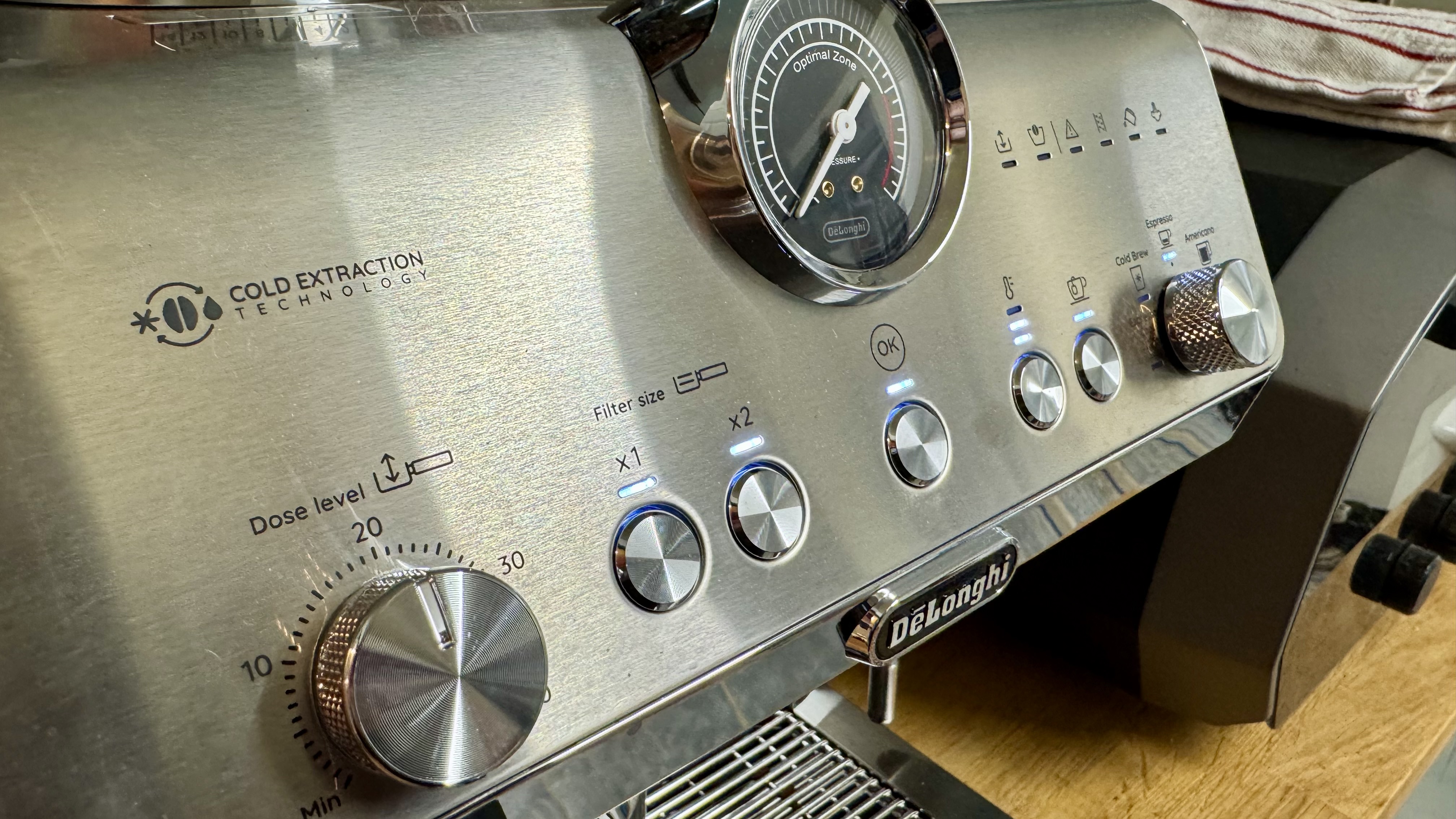
Although this machine is ostensibly designed for making hot espressos, it also comes with a robust steam wand and a simple knurled silver dial on the right that you just turn from off to steam. Making cappuccinos, lattes and macchiatos couldn’t be easier.
But wait, there’s more because this machine can also brew iced coffee making it a shoo-in for hot summer days. You get two types of cold brew – Espresso Cool and standard Cold Brew and, while I’m not sure how De’Longhi’s cold extraction tech works, it makes a fair fist of producing a very decent iced coffee. All you do is set the dial to your preferred beverage, load a glass with some ice under the spout and out pops your cold brew of choice.
Alternatively you also have the option to make a standard coffee for those who like an Americana and even a cup of tea via the separate water spout next to the group head. At this stage I should also give a shout out to the designers for including a flip-down espresso cup shelf which reduces the height of the drop from spout to cup, reducing bubbles in the crema in the process.
Is there anything I don’t like about this machine? Yes. Despite a check of the manual, there is no way to lock and remove the bean hopper and that means it’s a right royal hassle to change the blend of beans if there are already beans in the dispenser. That foible aside, I have no compunction in awarding this sterling espresso maker a full high five. It really is an amazingly easy machine to use.
De’Longhi La Specialista Opera review: performance
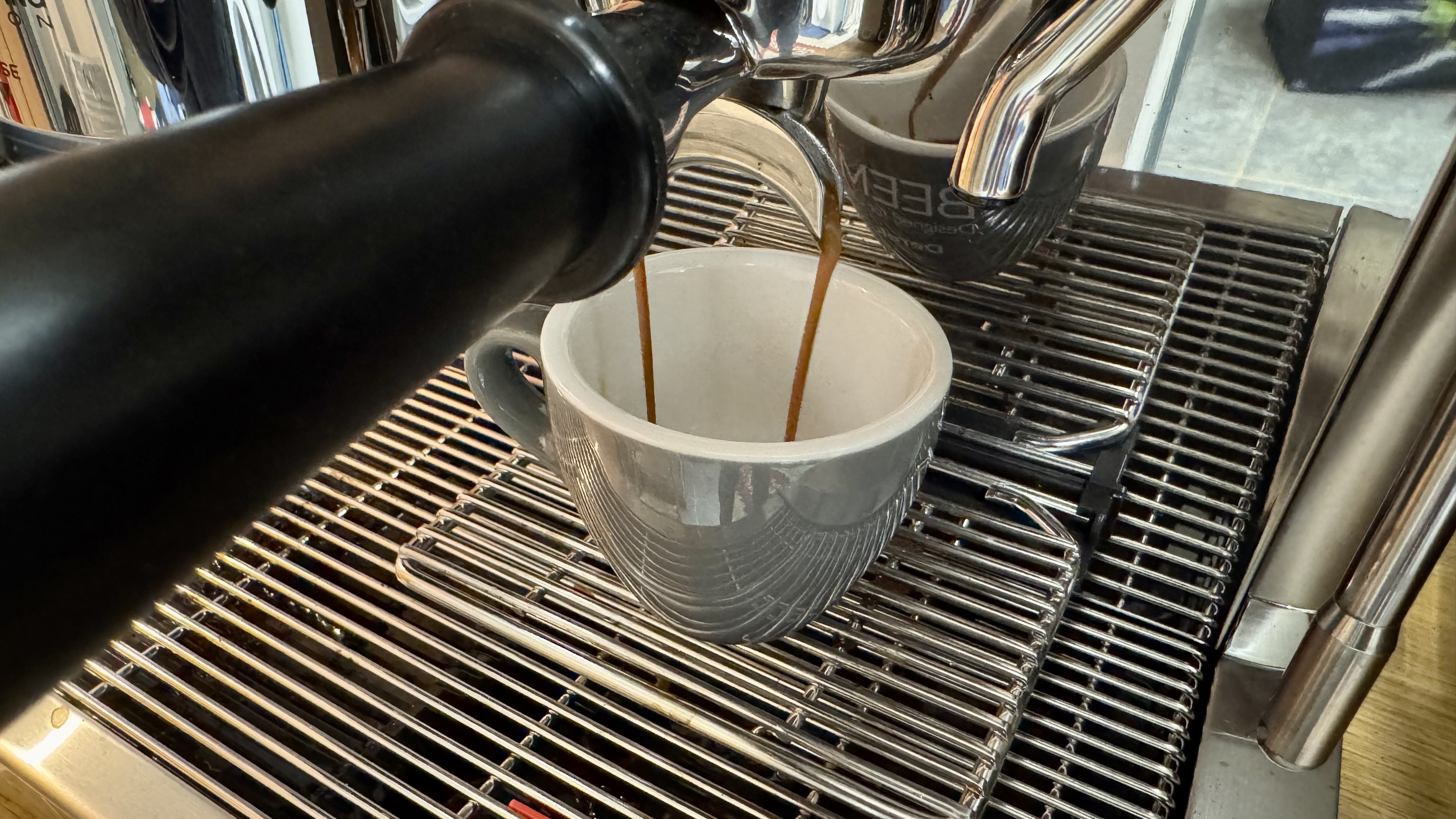
Since you only really need to fiddle with two parameters – grind size and pre-infusion temperature – the La Specialista Opera has been nothing but a joy to use. I love the little details like the light ‘click’ sound when you engage the portafilter with the coffee grinder head, the wonderfully smooth, springy action of the tamping lever and the firm, secure interface between the portafilter and group head.
Since I’ve been using my favourite blend of Signature coffee from Spiller & Tait – you should try it – I’ve had the pre-infusion temperature set to the centre position and I will leave it like that till the beans run out. For grind size I’ve settled on position 5 and duration of grind to the 20 mark. This, for me, has proved to be the sweet spot with the pressure dial slap bang in the middle, where it’s supposed to be.
Believe me, the espresso this machine makes is off-the-scale stunning, with a delicious oily crema and no bubbles of air floating about on top. Pure, creamy heaven packed with deep flavour and exquisite texture, in other words.
I then tried a cappuccino and macchiato using the side steam wand and provided brushed stainless steel milk carafe. Talk about easy. In fact all you do is turn the knurled silver dial on the right and the steam is dispensed. I should point out that this machine has just one boiler and not two like some other models. This means you can’t froth milk while extracting a coffee. You have to do them separately. No big deal in my opinion.
Finally, I gave the Cool Espresso setting a whirl and was impressed by how sweet it tasted. No it wasn’t very strong but I can vouch that it works well. However, I’m personally more in favour of a hot espresso over ice with some milk to temper the bite. But each to their own.
De’Longhi La Specialista Opera review: verdict
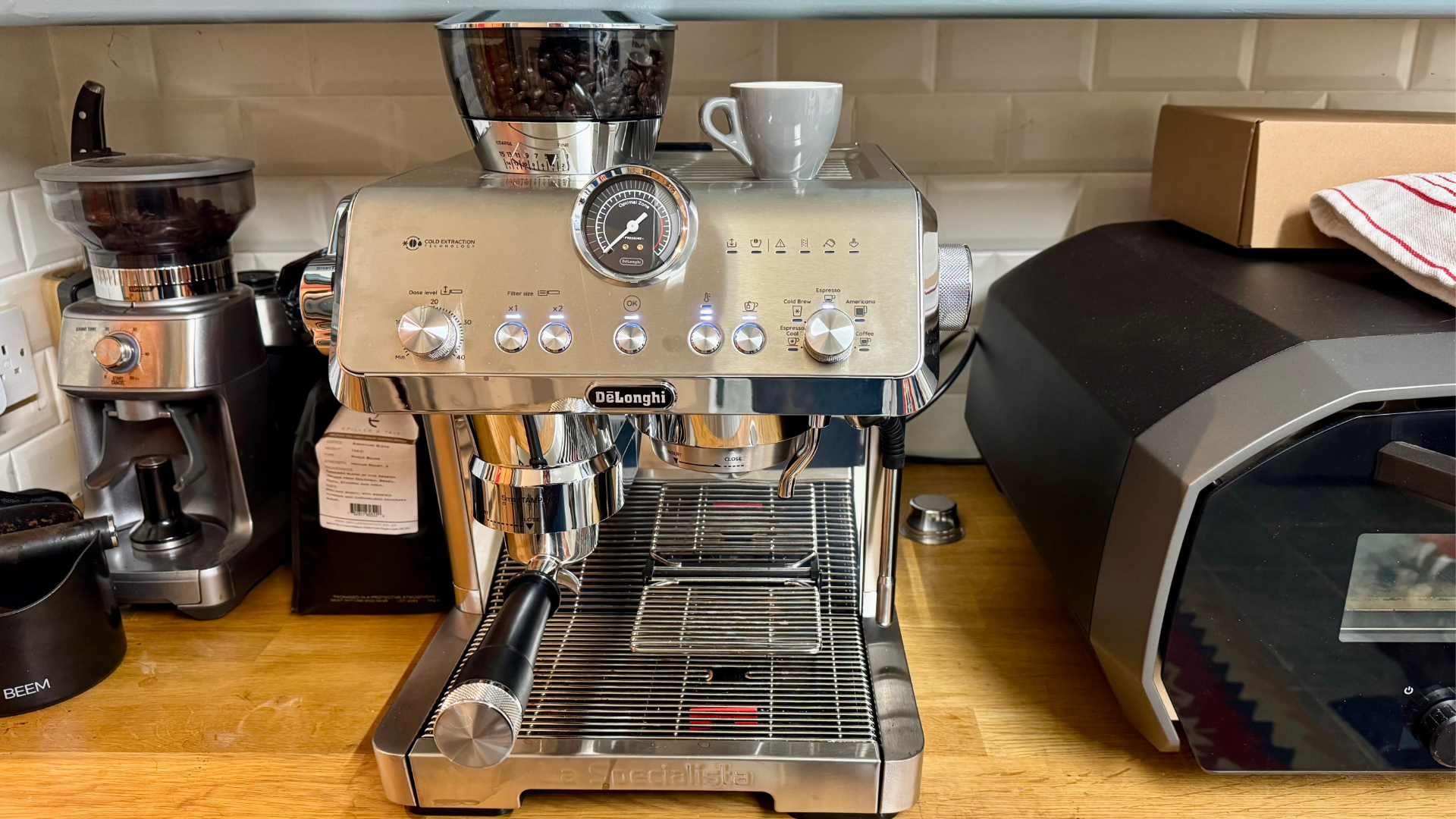
In all the years that I’ve been testing espresso machines, I can’t remember an easier model to use than this one. For instance, where other espresso machines require five to seven experimental cups, I nailed this one in three. And it’s been consistent ever since.
If you can afford the highish outlay and are a discerning coffee aficionado, I recommend this model without any reservations, because De’Longhi has really smashed it out of the park this time.
Sign up to the T3 newsletter for smarter living straight to your inbox
Get all the latest news, reviews, deals and buying guides on gorgeous tech, home and active products from the T3 experts
Derek (aka Delbert, Delvis, Delphinium, Delboy etc) specialises in home and outdoor wares, from coffee machines, white appliances and vacs to drones, garden gear and BBQs. He has been writing for more years than anyone can remember, starting at the legendary Time Out magazine – the original, London version – on a typewriter! He now writes for T3 between playing drums with his bandmates in Red Box (redboxmusic).
-
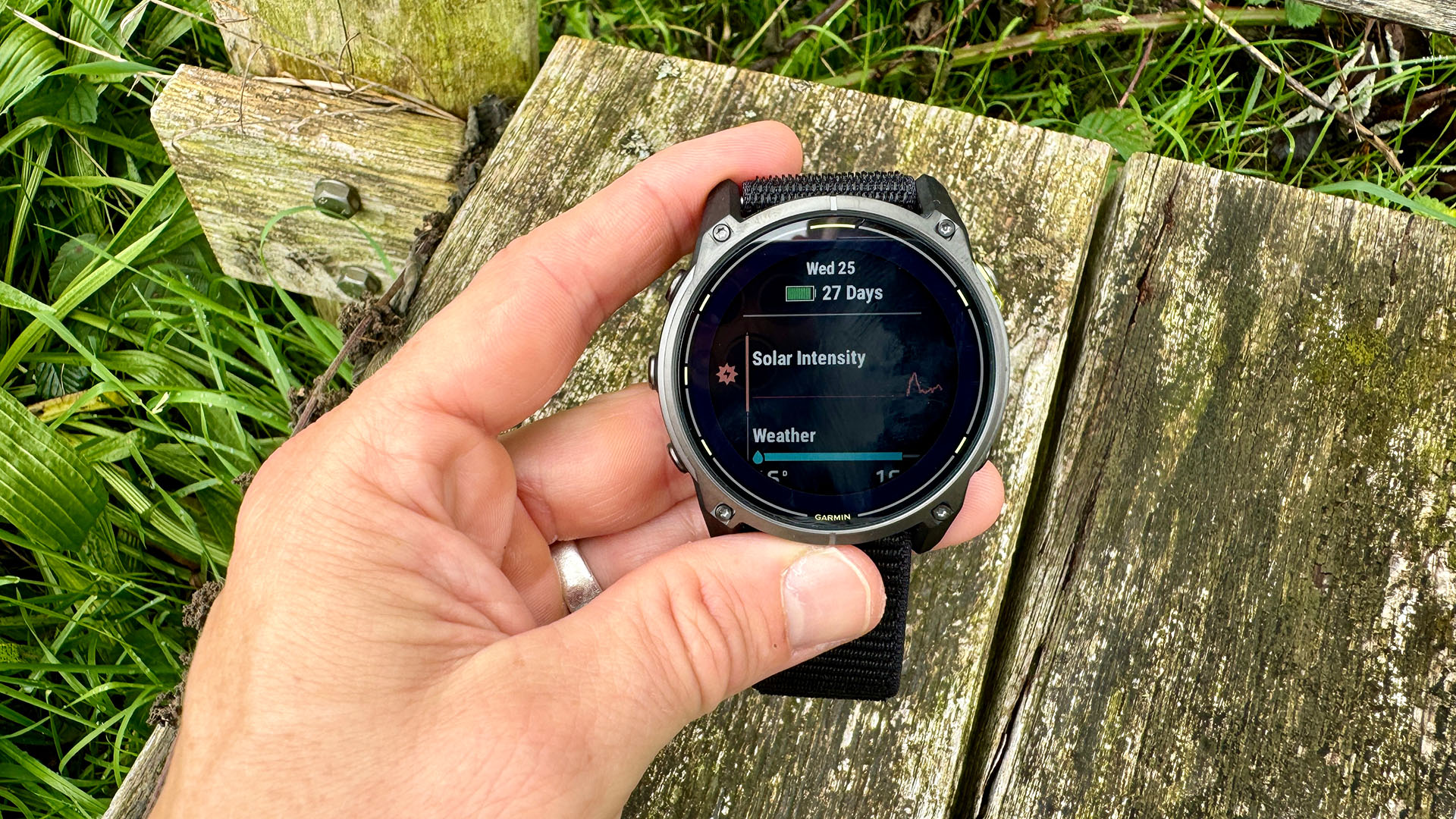 Garmin’s on a mission to update your wrist into oblivion as 100+ tweaks land on Fenix and Enduro watches
Garmin’s on a mission to update your wrist into oblivion as 100+ tweaks land on Fenix and Enduro watchesThe latest beta update looks comprehensive
By Matt Kollat Published
-
 Apple TV+'s beloved sci-fi series gets a surprise sequel and trailer
Apple TV+'s beloved sci-fi series gets a surprise sequel and trailerWondla is coming back
By Max Freeman-Mills Published
-
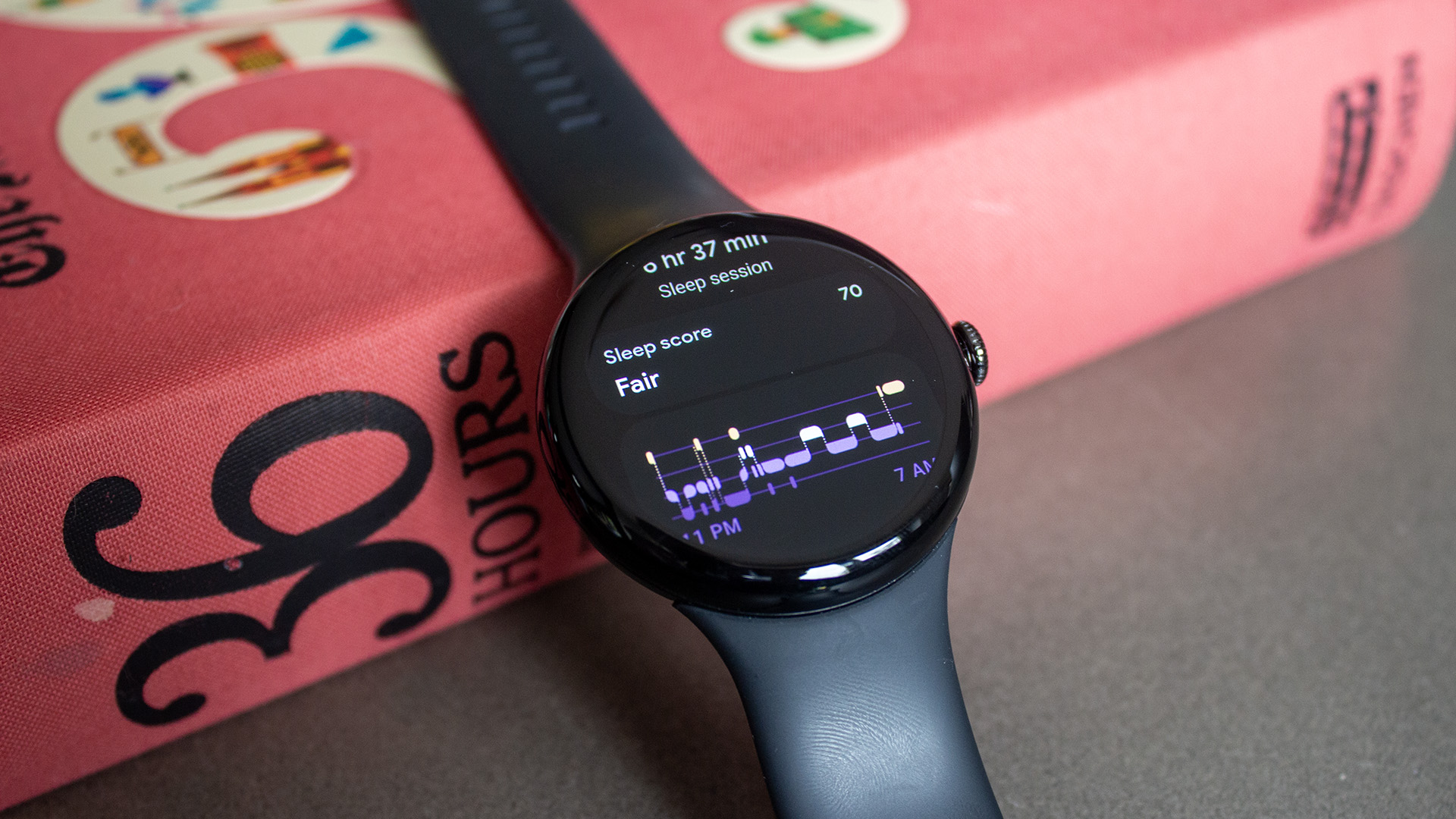 Google Pixel Watch 3 just got a potentially life-saving update in the US
Google Pixel Watch 3 just got a potentially life-saving update in the USThe latest update brings advanced heart monitoring to American wrists
By Matt Kollat Published